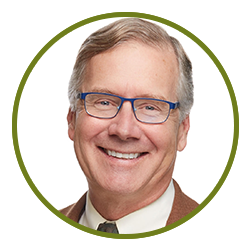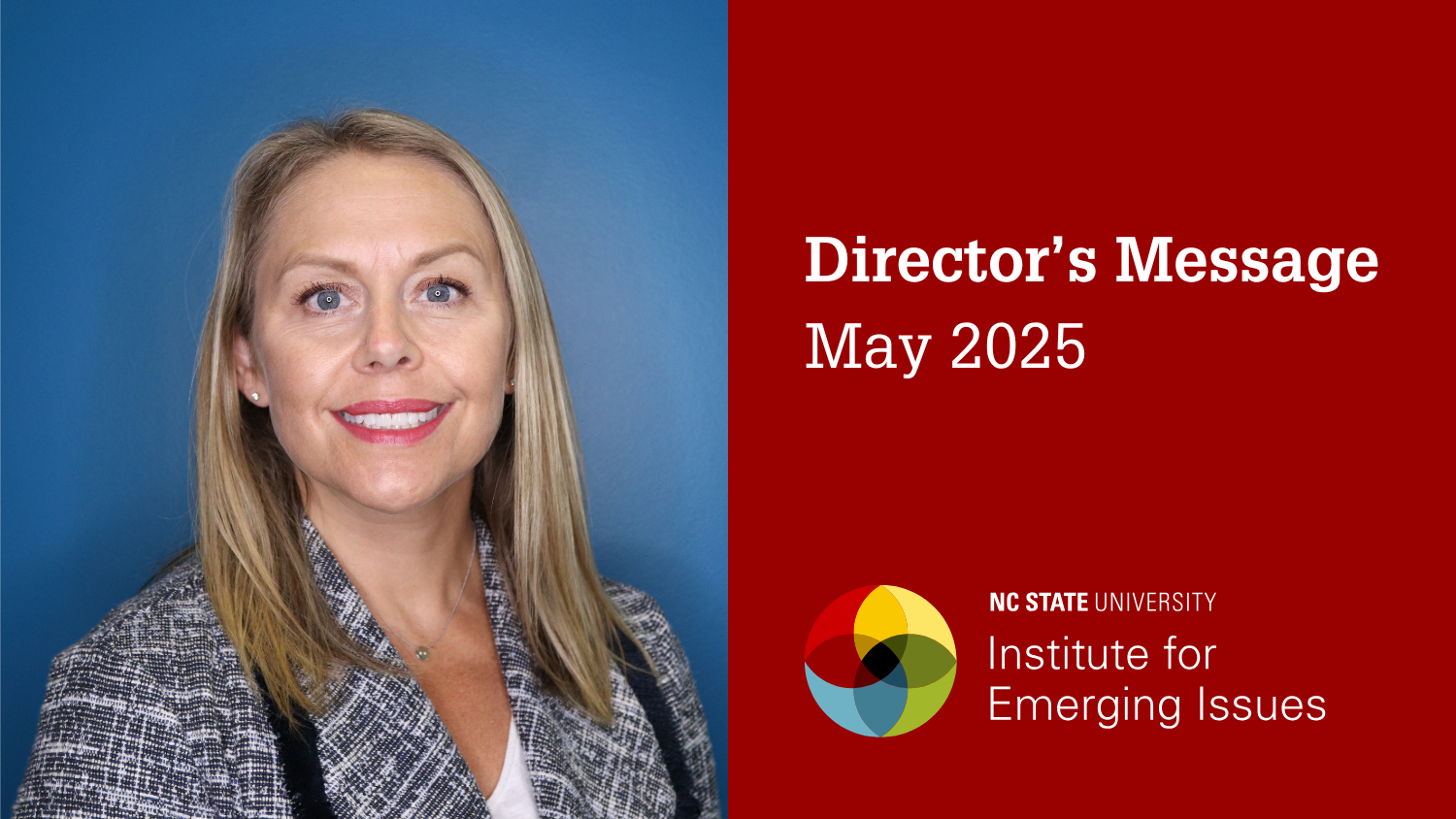Director’s Log | May 2021

Anchors in a Storm
Back in 2015, the Institute for Emerging Issues made a tricky commitment. We said we wanted to work on a project with The Duke Endowment to examine whether—and how—rural faith organizations might position themselves as “anchor institutions” in their communities.
On one level the work made total sense. The Duke Endowment had a long-standing commitment to strengthening Methodist churches located in what James B. Duke described in 1924 as “sparsely settled rural communities.”
And as part of our ongoing work, IEI was deeply aware of what had been happening to some of the traditional rural “anchors” over the past few decades—big furniture companies, textile and tobacco and apparel plants that employed so many people for so many decades have either shuttered or shrunk; many Main Streets struggle; a lot of rural hospitals have been bought up or shut down.
But there are still plenty of churches. North Carolina still has, at last count, 8,961 churches in the state, an average of almost 90 per county, and those faith institutions have been a vital part of each community’s life. Of course they, along with synagogues, mosques and temples, are “anchors” of their communities.
But the project was not without some risk. A traditional view would be that churches are from Venus—focused on love, faith and feelings of their flocks—and that business and academia and policy making are from Mars—focused on process and numbers and dispassionate data—and that those two planets should stay in separate orbits.
Six years later, it’s easy to see how the two worlds can—and must—intersect if we are going to find our way forward.
Over three one-day sessions this month, the IEI Rural Faith Communities as Anchor Institutions (RFCAI) team (Kylie Foley, John Parker and Ellen Beasley) brought together rural pastors, lay leaders and community members for one of our regular conferences. This one, called “Recovery, Rekindle, Resilience,” was a series of meetings and brainstorm sessions to try to sort out what has happened to us over the past year (among other things, the pandemic, a recession, racial reckoning) and how we can move forward.
The idea of RFCAI is that the Institute for Emerging Issues has a deep knowledge of critical public policy issues facing the state. We know the data and the state and regional people and organizations working on them—information that could be useful to local churches interested in working on some of the bigger issues facing their communities, many times beyond their church walls.
Our partners in the faith community know their people and what it takes to make deep change. They bring to the conversations a deep knowledge of the communities they serve, their hopes and assets and fears. Many of them have deep traditions of providing food, child care, and tutoring to the communities around them.
The past year has brought together those working on public policy and those focused on spiritual development together in new ways that change both. As Rev. Dawn Daly-Mack noted at one of the sessions, “we tend to compartmentalize ourselves,” bringing only part of our skill sets and selves to bear on any given challenge. In the past, it may have been “the church doing church stuff in church ways”; and “the state doing state stuff in state ways.” The pandemic has shown us there is too much stuff to do to work in isolation.
We’re better when we can find ways to work together.
For example, our education community is learning that addressing COVID-19 learning loss for students is not just a matter of throwing 150 hours of summer instruction at our students. As one teacher wrote in EdWeek, “when our youths are frightened, disconnected, grieving, or anxious, they aren’t learning…their amygdalas are in charge, and adults sound just like Charlie Brown’s teacher.” If we want students to respond, we need to learn to speak and teach with empathy and love, something that our faith community understands deeply.
At the same time we try to make sure that members of the faith community, newly energized about an emerging issues facing their town, get to meet the people who have been working on and thinking about that issue, learn about which strategies appear to be working and how to connect to and build on successes, so that the love can be focused.
When we do it right, slowly, one leader at a time, one issue at a time, amazing things happen. Rural faith leaders can begin the work of exploring what their anchoring looks like. As Kim Pevia, artist, entrepreneur and community trainer, noted in a session this week, the faith community has a unique ability to “work our love.”
As churches step forward cautiously into a broader role as community anchors, some caution makes sense. Many rural churches are struggling, facing financial challenges and aging membership. Those problems are real. But it is also possible that moving beyond church walls into deeper relationship with more people in their community could help address those challenges.
Similarly governmental organizations partnering with the faith community need to ensure the whole community is being served, with no faith strings attached. But the smart, motivated, deeply connected leadership our faith communities bring can make any public policy effort more successful.
So we continue to brainstorm and learn together and look for the right ways to work together in the right ways. Our communities need all the anchors we can find.
- Categories:


